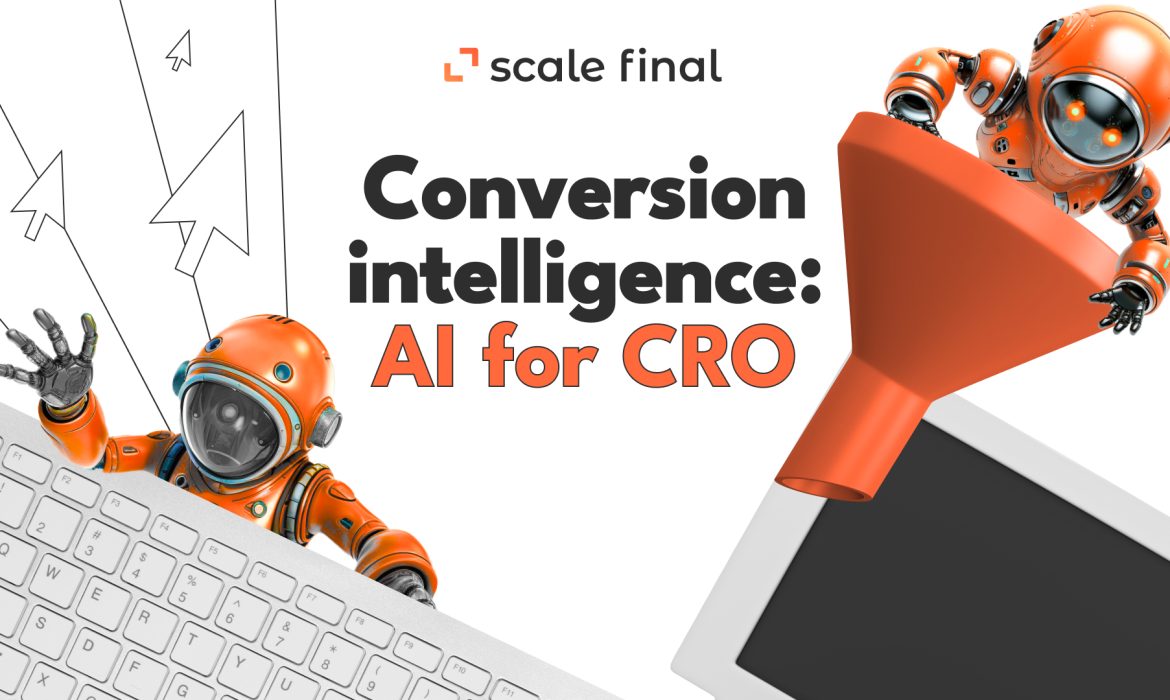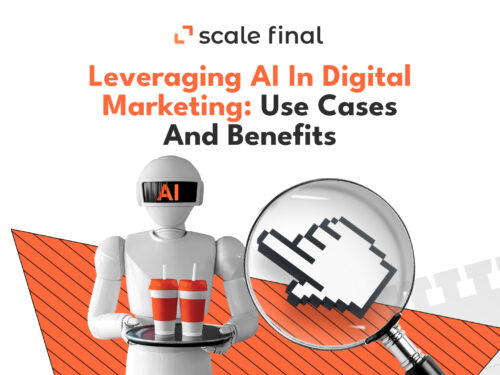Home • Blog • Conversion intelligence: AI for CRO
Conversion intelligence: AI for CRO
Hi everyone. To break the feeling that the future just arrived, we should say that artificial intelligence has been with us for a long time.
In 2016, we were all praising chatbots. Or how, for example, Volkswagen replaced an entire marketing agency with AI.
But what has changed? The answer is simple: accessibility.
Like any marketer, you simply couldn’t handle so much data. Collect, analyze, test, implement, test. All of that has radically changed with the mass adoption of AI.
If we briefly summarize our series of posts on conversion optimization, here’s what comes out: If you want to increase sales but don’t have enough traffic, you can hardly do serious A/B testing. If you can’t do the test, you can’t improve the product. And guessing is kind of out of the question, too.
CRO from scratch: Part 1, Part 2, Part 3
AI for CRO is here to help with fundamental problems of conversion rate optimization:

Now everyone can join in without breaking the bank.
How AI is changing CRO?
In traditional CRO, you’d typically launch your campaign, evaluate its performance, and then run A/B tests to optimize.
AI for CRO tools, however, are revolutionizing every stage of this process. This led to each step taking less time. And as mentioned above, it’s also much more accessible.
With tools like AI eye-tracking, heat maps, and predictive analytics, you can test your hypotheses even before launch. You don’t need expensive tests, machines, or lots of people.
AI copywriting tools can create a compelling, conversion-focused copy. That obviously would be not a final version, you can still tweak it.
As for testing, it gets even better with AI-powered tools. They’re faster, more adaptable, and can automatically segment your website visitors. Then they direct each visitor to the variant that has the greatest chance of increasing your conversion rates.

AI conversion rate optimization steps
CRO is a clear system. It consists of 6 steps:
- strategy
- research
- data collection
- analysis
- testing
- optimization
The seventh step could be ‘repeat’, but that is also clear. To test a hypothesis, we only test it and don’t change several elements at once.
With AI implementation, we aren’t reinventing the wheel. There is AI software for each of the steps.
Step 1. Strategy
The process begins with goal setting. Of course, the AI isn’t involved in this process. Although, you can ask ChatGPT to give you a goal and the meaning of life, but let’s leave it.
Your conversion goal could be as simple as increasing conversions. Others: lowering customer acquisition costs, maximizing traffic, or attracting better-fitting customers.
The goal is set. AI with predictive modeling comes into play. The market is full of programs to help with this, such as Obviously.ai. You can get the answers to all the “What if…” and decide which strategy is right for you.
AI can also help with product development. You can create a user persona. Based on lots of data about demographics, behaviors, goals, and motivations, you can tailor your product to your target audience. For example, with User Persona.

Step 2. Research
Understanding why people come to our site in the first place used to require collecting a lot of data. For starters, use on-site data and analytics.
That could be as simple as calling customers and recording conversations. You could also use more sophisticated software that recorded heat maps, mouse movements and so on.
You could do even more complicated things and do traditional neuromarketing research: That is, you could put people in front of cameras or wires that record their eyes and try to figure out how certain elements affect perception.
We talked about this topic in Neuromarketing is gold?
But what do we do now with all data? Analyze it with AI.
Steps 3-4. Data collection and analysis
We’re also supercomputers, but of course not so powerful. And why torture people when you can use AI tools that do the job much faster?
We all use Google Analytics. We and over 28.1 million websites. Google Analytics is powered by AI and it helps you make sense of all the data your website collects. Basically, it sifts through the massive amount of information and surfaces trends in your website’s performance.

Keatext and similar tools analyze large amounts of subjective customer feedback, including surveys, reviews, chat logs, and social media posts. Based on this analysis, they provide actionable insights.
We can go even further. Scale Final‘s AI eye tracking softwarel simulates how real people would interact with your website. Using machine learning and extensive image data from eye-tracking studies, our AI heatmaps achieve a 90% accuracy rate compared to human studies.

Step 5. Testing
Traditional A/B testing is slow. It takes forever to complete, demands loads of data, and you can only test a few variants at a time. Not to mention you couldn’t optimize anything until the test was over.
Tools like ABtesting.ai is here. They provide automatic suggestions for your headline, copy, and call to action, saving you valuable time and effort in testing.
With AI for CRO A/B testing, you don’t need a huge amount of traffic either. You can test multiple variants at the same time. Plus, you can personalize different versions based on user behavior, location, and other characteristics.

Learn machine learning testing: Multi-armed bandit vs A/B test: choose your fighter
6. Optimization
Optimization is on you, just like as we said in The future of content: AI revolution. Take a look at your list of changes and hypotheses, and start putting them to action.
- Use the insights you can glean from customer data. It’s how you can improve the overall experience on your website.
- Combine human and AI studies to gain a deeper understanding of where users’ attention is focused on your website. This will give you valuable insights into which elements are capturing their interest.
- Remember to follow the data. Don’t get too hung up on the changes you’re testing. Let the system decide which variation to display based on performance. Trust the numbers to make your decisions.
Author
-
 Product Manager
Product ManagerI'm equal parts strategic thinker and creative doer, with over 6 years of experience in digital marketing. I started out as a creative copywriter, and now I'm all in product management. Fun, inspiring and slightly caffeinated.
View all posts






